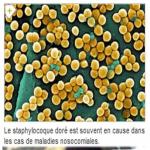
Natural remedy for myocardial infarction
- By narso10
- On 2025-07-01
- 0 comments
Natural remedy for myocardial infarction , how to treat r myocardial infarction ? what causes of the r myocardial infarction and how to remedy it ? PLEASE TO JOIN US ON WHATSAPP
What Causes a Myocardial Infarction?
In most cases, a heart attack is caused by:
The rupture of a fatty deposit (atherosclerotic plaque) in the wall of a coronary artery.
This triggers the formation of a blood clot (thrombus) at the site of rupture.
The clot blocks the flow of oxygen-rich blood through the coronary artery to the heart muscle.
Without oxygen, the heart tissue begins to die within minutes to hours.
Main Risk Factors for myocardial infarction
Several factors increase the risk of a myocardial infarction, including:
High blood pressure
High cholesterol levels
Smoking
Diabetes
Obesity
Physical inactivity
Unhealthy diet
Stress
Family history of heart disease
Age (especially men over 50 and postmenopausal women)
Common Symptoms of a Myocardial Infarction:
Typical signs include:
Chest pain or discomfort (often described as a squeezing, pressure, heaviness, or tightness)
Pain spreading to the left arm, jaw, neck, back, or stomach
Shortness of breath
Sweating
Nausea or vomiting
Dizziness or fainting
Unexplained fatigue
Important: Some people, especially older adults, women, or people with diabetes, may have less typical or “silent” symptoms.
How Is It Diagnosed?
Doctors use several tests to confirm a myocardial infarction:
Electrocardiogram (ECG or EKG): Detects abnormal heart rhythms and patterns.
Blood tests (Troponin levels): Measure heart muscle damage.
Coronary angiography: Visualizes blockages in the coronary arteries.
Echocardiogram: Assesses the heart’s pumping function and damaged areas.
How to Treat Naturaly myocardial infarction?
A heart attack is a medical emergency. Immediate treatment aims to restore blood flow to the heart muscle as quickly as possible.
Key treatments include:
Medications (aspirin, blood thinners, pain relief, clot-dissolving drugs)
Coronary angioplasty (inserting a balloon and stent to open blocked arteries)
Coronary artery bypass surgery (in severe cases)
After emergency care, long-term treatment focuses on:
Medications to prevent further attacks
Lifestyle changes (healthy diet, regular exercise, quitting smoking)
Cardiac rehabilitation programs
A minimally invasive procedure where a cardiologist inserts a thin tube (catheter) through a blood vessel (usually in the wrist or groin) up to the blocked coronary artery. A small balloon is inflated to open the blockage, and a stent (a small mesh tube) is placed to keep the artery open.
Why it’s definitive:
It directly removes or compresses the blockage.
Restores blood flow immediately.
Reduces heart muscle damage.
Lowers the risk of death, complications, and recurrence.
Timing:
Most effective when performed within 90–120 minutes of first medical contact.
Thrombolytic (Fibrinolytic) Therapy
Used if PCI isn’t available within 120 minutes of diagnosis.
What it is:
Intravenous medications (like alteplase, tenecteplase, or streptokinase) that dissolve the blood clot blocking the coronary artery.
Why it’s definitive:
Quickly restores blood flow by breaking down the clot.
Can be life-saving when PCI is unavailable.
Limitations:
Less effective than PCI.
Higher risk of bleeding (especially brain hemorrhage).
Should be given as early as possible, ideally within 30 minutes of hospital arrival.
Additional Supportive and Secondary Treatments
After restoring blood flow with PCI or thrombolytics, patients receive medications to:
Prevent further clot formation (antiplatelets like aspirin and clopidogrel)
Lower heart workload (beta-blockers)
Control cholesterol (statins)
Prevent heart failure and future heart attacks (ACE inhibitors or angiotensin receptor blockers)
Patients are also enrolled in cardiac rehabilitation programs to optimize recovery.
Can It Be Prevented?
Yes — by managing risk factors. Ways to reduce your chances of a myocardial infarction include:
Quitting smoking
Maintaining a healthy weight
Eating a balanced, heart-friendly diet
Controlling blood pressure, cholesterol, and blood sugar
Exercising regularly
Managing stress
PLEASE TO JOIN US
CALL / +2290160081765
In Summary:
A myocardial infarction (heart attack) occurs when a blockage in a coronary artery prevents blood from reaching the heart muscle, causing tissue death. It’s a medical emergency requiring immediate care. However, many heart attacks are preventable through a combination of medication, lifestyle changes, and managing risk factors.
Add a comment








